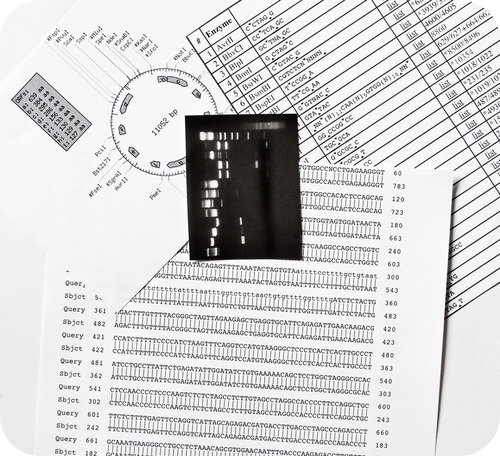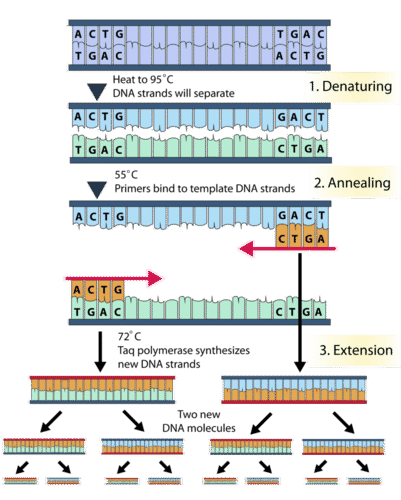3.4: Biotechnology
- Page ID
- 12071
\( \newcommand{\vecs}[1]{\overset { \scriptstyle \rightharpoonup} {\mathbf{#1}} } \)
\( \newcommand{\vecd}[1]{\overset{-\!-\!\rightharpoonup}{\vphantom{a}\smash {#1}}} \)
\( \newcommand{\dsum}{\displaystyle\sum\limits} \)
\( \newcommand{\dint}{\displaystyle\int\limits} \)
\( \newcommand{\dlim}{\displaystyle\lim\limits} \)
\( \newcommand{\id}{\mathrm{id}}\) \( \newcommand{\Span}{\mathrm{span}}\)
( \newcommand{\kernel}{\mathrm{null}\,}\) \( \newcommand{\range}{\mathrm{range}\,}\)
\( \newcommand{\RealPart}{\mathrm{Re}}\) \( \newcommand{\ImaginaryPart}{\mathrm{Im}}\)
\( \newcommand{\Argument}{\mathrm{Arg}}\) \( \newcommand{\norm}[1]{\| #1 \|}\)
\( \newcommand{\inner}[2]{\langle #1, #2 \rangle}\)
\( \newcommand{\Span}{\mathrm{span}}\)
\( \newcommand{\id}{\mathrm{id}}\)
\( \newcommand{\Span}{\mathrm{span}}\)
\( \newcommand{\kernel}{\mathrm{null}\,}\)
\( \newcommand{\range}{\mathrm{range}\,}\)
\( \newcommand{\RealPart}{\mathrm{Re}}\)
\( \newcommand{\ImaginaryPart}{\mathrm{Im}}\)
\( \newcommand{\Argument}{\mathrm{Arg}}\)
\( \newcommand{\norm}[1]{\| #1 \|}\)
\( \newcommand{\inner}[2]{\langle #1, #2 \rangle}\)
\( \newcommand{\Span}{\mathrm{span}}\) \( \newcommand{\AA}{\unicode[.8,0]{x212B}}\)
\( \newcommand{\vectorA}[1]{\vec{#1}} % arrow\)
\( \newcommand{\vectorAt}[1]{\vec{\text{#1}}} % arrow\)
\( \newcommand{\vectorB}[1]{\overset { \scriptstyle \rightharpoonup} {\mathbf{#1}} } \)
\( \newcommand{\vectorC}[1]{\textbf{#1}} \)
\( \newcommand{\vectorD}[1]{\overrightarrow{#1}} \)
\( \newcommand{\vectorDt}[1]{\overrightarrow{\text{#1}}} \)
\( \newcommand{\vectE}[1]{\overset{-\!-\!\rightharpoonup}{\vphantom{a}\smash{\mathbf {#1}}}} \)
\( \newcommand{\vecs}[1]{\overset { \scriptstyle \rightharpoonup} {\mathbf{#1}} } \)
\( \newcommand{\vecd}[1]{\overset{-\!-\!\rightharpoonup}{\vphantom{a}\smash {#1}}} \)
\(\newcommand{\avec}{\mathbf a}\) \(\newcommand{\bvec}{\mathbf b}\) \(\newcommand{\cvec}{\mathbf c}\) \(\newcommand{\dvec}{\mathbf d}\) \(\newcommand{\dtil}{\widetilde{\mathbf d}}\) \(\newcommand{\evec}{\mathbf e}\) \(\newcommand{\fvec}{\mathbf f}\) \(\newcommand{\nvec}{\mathbf n}\) \(\newcommand{\pvec}{\mathbf p}\) \(\newcommand{\qvec}{\mathbf q}\) \(\newcommand{\svec}{\mathbf s}\) \(\newcommand{\tvec}{\mathbf t}\) \(\newcommand{\uvec}{\mathbf u}\) \(\newcommand{\vvec}{\mathbf v}\) \(\newcommand{\wvec}{\mathbf w}\) \(\newcommand{\xvec}{\mathbf x}\) \(\newcommand{\yvec}{\mathbf y}\) \(\newcommand{\zvec}{\mathbf z}\) \(\newcommand{\rvec}{\mathbf r}\) \(\newcommand{\mvec}{\mathbf m}\) \(\newcommand{\zerovec}{\mathbf 0}\) \(\newcommand{\onevec}{\mathbf 1}\) \(\newcommand{\real}{\mathbb R}\) \(\newcommand{\twovec}[2]{\left[\begin{array}{r}#1 \\ #2 \end{array}\right]}\) \(\newcommand{\ctwovec}[2]{\left[\begin{array}{c}#1 \\ #2 \end{array}\right]}\) \(\newcommand{\threevec}[3]{\left[\begin{array}{r}#1 \\ #2 \\ #3 \end{array}\right]}\) \(\newcommand{\cthreevec}[3]{\left[\begin{array}{c}#1 \\ #2 \\ #3 \end{array}\right]}\) \(\newcommand{\fourvec}[4]{\left[\begin{array}{r}#1 \\ #2 \\ #3 \\ #4 \end{array}\right]}\) \(\newcommand{\cfourvec}[4]{\left[\begin{array}{c}#1 \\ #2 \\ #3 \\ #4 \end{array}\right]}\) \(\newcommand{\fivevec}[5]{\left[\begin{array}{r}#1 \\ #2 \\ #3 \\ #4 \\ #5 \\ \end{array}\right]}\) \(\newcommand{\cfivevec}[5]{\left[\begin{array}{c}#1 \\ #2 \\ #3 \\ #4 \\ #5 \\ \end{array}\right]}\) \(\newcommand{\mattwo}[4]{\left[\begin{array}{rr}#1 \amp #2 \\ #3 \amp #4 \\ \end{array}\right]}\) \(\newcommand{\laspan}[1]{\text{Span}\{#1\}}\) \(\newcommand{\bcal}{\cal B}\) \(\newcommand{\ccal}{\cal C}\) \(\newcommand{\scal}{\cal S}\) \(\newcommand{\wcal}{\cal W}\) \(\newcommand{\ecal}{\cal E}\) \(\newcommand{\coords}[2]{\left\{#1\right\}_{#2}}\) \(\newcommand{\gray}[1]{\color{gray}{#1}}\) \(\newcommand{\lgray}[1]{\color{lightgray}{#1}}\) \(\newcommand{\rank}{\operatorname{rank}}\) \(\newcommand{\row}{\text{Row}}\) \(\newcommand{\col}{\text{Col}}\) \(\renewcommand{\row}{\text{Row}}\) \(\newcommand{\nul}{\text{Nul}}\) \(\newcommand{\var}{\text{Var}}\) \(\newcommand{\corr}{\text{corr}}\) \(\newcommand{\len}[1]{\left|#1\right|}\) \(\newcommand{\bbar}{\overline{\bvec}}\) \(\newcommand{\bhat}{\widehat{\bvec}}\) \(\newcommand{\bperp}{\bvec^\perp}\) \(\newcommand{\xhat}{\widehat{\xvec}}\) \(\newcommand{\vhat}{\widehat{\vvec}}\) \(\newcommand{\uhat}{\widehat{\uvec}}\) \(\newcommand{\what}{\widehat{\wvec}}\) \(\newcommand{\Sighat}{\widehat{\Sigma}}\) \(\newcommand{\lt}{<}\) \(\newcommand{\gt}{>}\) \(\newcommand{\amp}{&}\) \(\definecolor{fillinmathshade}{gray}{0.9}\)
So how does a scientist work with DNA?
It always starts with the sequence. Once the sequence is known, so much more can be done. Specific regions can be isolated, cloned, amplified, and then used to help us.
Biotechnology Methods
It always starts with the sequence. Once the sequence is known, so much more can be done. Specific regions can be isolated, cloned, amplified, and then used to help us.
Biotechnology Methods
Biotechnology is the use of technology to change the genetic makeup of living things for human purposes. Generally, the purpose of biotechnology is to create organisms that are useful to humans or to cure genetic disorders. For example, biotechnology may be used to create crops that resist insect pests or yield more food, or to create new treatments for human diseases.
Biotechnology uses a variety of techniques to achieve its aims. Two commonly used techniques are gene cloning and the polymerase chain reaction.
Gene Cloning
Gene cloning is the process of isolating and making copies of a gene. This is useful for many purposes. For example, gene cloning might be used to isolate and make copies of a normal gene for gene therapy. Gene cloning involves four steps: isolation, ligation, transformation, and selection.
- In isolation, an enzyme (called a restriction enzyme) is used to break DNA at a specific base sequence. This is done to isolate a gene.
- During ligation, the enzyme DNA ligase combines the isolated gene with plasmid DNA from bacteria. (A plasmid is circular DNA that is not part of a chromosome and can replicate independently.) Ligation is illustrated in the Figure below. The DNA that results is called recombinant DNA.
- In transformation, the recombinant DNA is inserted into a living cell, usually a bacterial cell. Changing an organism in this way is also called genetic engineering.
- Selection involves growing transformed bacteria to make sure they have the recombinant DNA. This is a necessary step because transformation is not always successful. Only bacteria that contain the recombinant DNA are selected for further use.
Polymerase Chain Reaction
The polymerase chain reaction (PCR) makes many copies of a gene or other DNA segment. This might be done in order to make large quantities of a gene for genetic testing. PCR involves three steps: denaturing, annealing, and extension. The three steps are illustrated in the Figure below. They are repeated many times in a cycle to make large quantities of the gene.
- Denaturing involves heating DNA to break the bonds holding together the two DNA strands. This yields two single strands of DNA.
- Annealing involves cooling the single strands of DNA and mixing them with short DNA segments called primers. Primers have base sequences that are complementary to segments of the single DNA strands. As a result, bonds form between the DNA strands and primers.
- Extension occurs when an enzyme (Taq polymerase or Taq DNA polymerase) adds nucleotides to the primers. This produces new DNA molecules, each incorporating one of the original DNA strands.
 The Polymerase Chain Reaction. The polymerase chain reaction involves three steps. High temperatures are needed for the process to work. The enzyme Taq polymerase is used in step 3 because it can withstand high temperatures.
The Polymerase Chain Reaction. The polymerase chain reaction involves three steps. High temperatures are needed for the process to work. The enzyme Taq polymerase is used in step 3 because it can withstand high temperatures.Summary
- Biotechnology is the use of technology to change the genetic makeup of living things for human purposes.
- Gene cloning is the process of isolating and making copies of a DNA segment such as a gene.
- The polymerase chain reaction makes many copies of a gene or other DNA segment.
Review
- Define biotechnology.
- What is recombinant DNA?
- Identify the steps of gene cloning.
- What is the purpose of the polymerase chain reaction?
- Describe the three steps of PCR.
Resources
| Image | Reference | Attributions |
 |
[Figure 1] | Credit: Jodi So;Zachary Wilson Source: CK-12 Foundation License: CC BY-NC |
 |
[Figure 2] | Credit: Jodi So;Courtesy of Chemical Science & Technology Laboratory, National Institute of Standards and Technology Source: CK-12 Foundation ; commons.wikimedia.org/wiki/File:Codis_profile.jpg License: CC BY-NC 3.0; Public Domain |

